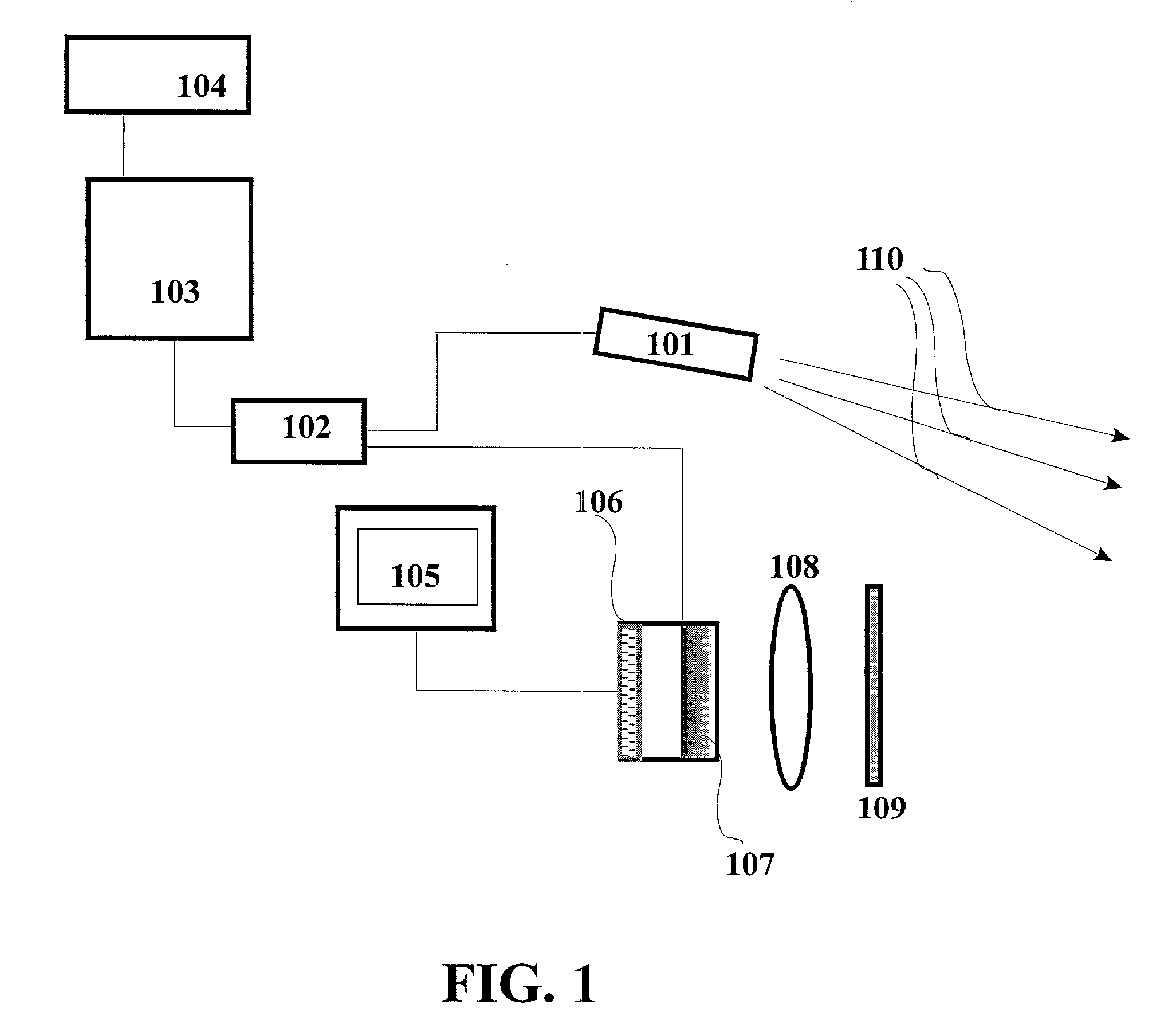Device and method for vehicular invisible road illumination and imaging
a technology of invisible road and device, applied in the direction of reradiation, lighting and heating apparatus, instruments, etc., can solve the problems of limited vision, large percentage of all nighttime car accidents, and high accident ra
- Summary
- Abstract
- Description
- Claims
- Application Information
AI Technical Summary
Benefits of technology
Problems solved by technology
Method used
Image
Examples
first embodiment
[0082]
[0083] The description of this embodiment and the principles of operation of the invention can be understood from FIGS. 1, 2 and 2A. A pulsed road illuminating source of light 101 is used as a headlight of a vehicle and its radiation 110 is directed towards a direction of a vehicle movement to illuminate the road. If laser is used as a light source 101 its output may be homogenized via a fiber optic or light pipe or other such mean as known by those skilled in the art to uniformly illuminate the target area. The repetition rate of the pulses of the device 101 may be more than reciprocal time of eye inertia, preferably more than 5 Hz, although any rate can be used. The device 101 may be any type of pulsed source of light (for example: laser, pulsed arc discharge xenon lamps, electrodeless discharge lamp, light emitting diode etc.) illuminating in the invisible for human eye spectrum about 0.19-0.45 and 0.7-5 .mu.m. The spectral range of road illuminating device 101 may be in an...
second embodiment
[0121]
[0122] To increase reliability for the whole system also for the most demanding type of vehicles like police, ambulance, fire rescue additional improvement is included. For these purposes an additional generator is included, triggering electromagnetic pulse with electromagnetic frequency of its radiation different in comparison with road illuminating pulse. This additional triggering pulse is generated before road illuminating pulse with predetermined and the same for all vehicles time difference. The radiation from the additional generator is directed in the same direction as laser pulse from illuminating pulsed laser.
[0123] The technique described above can be called an ultra fast synchronized imaging technology Thus another preferred embodiment of ultra fast synchronized vehicular imaging system with invisible headlights is provided by this invention. The principle of operation can be understood from FIGS. 3 and 4. In comparison with the first embodiment of this invention, ...
PUM
 Login to View More
Login to View More Abstract
Description
Claims
Application Information
 Login to View More
Login to View More - R&D
- Intellectual Property
- Life Sciences
- Materials
- Tech Scout
- Unparalleled Data Quality
- Higher Quality Content
- 60% Fewer Hallucinations
Browse by: Latest US Patents, China's latest patents, Technical Efficacy Thesaurus, Application Domain, Technology Topic, Popular Technical Reports.
© 2025 PatSnap. All rights reserved.Legal|Privacy policy|Modern Slavery Act Transparency Statement|Sitemap|About US| Contact US: help@patsnap.com



